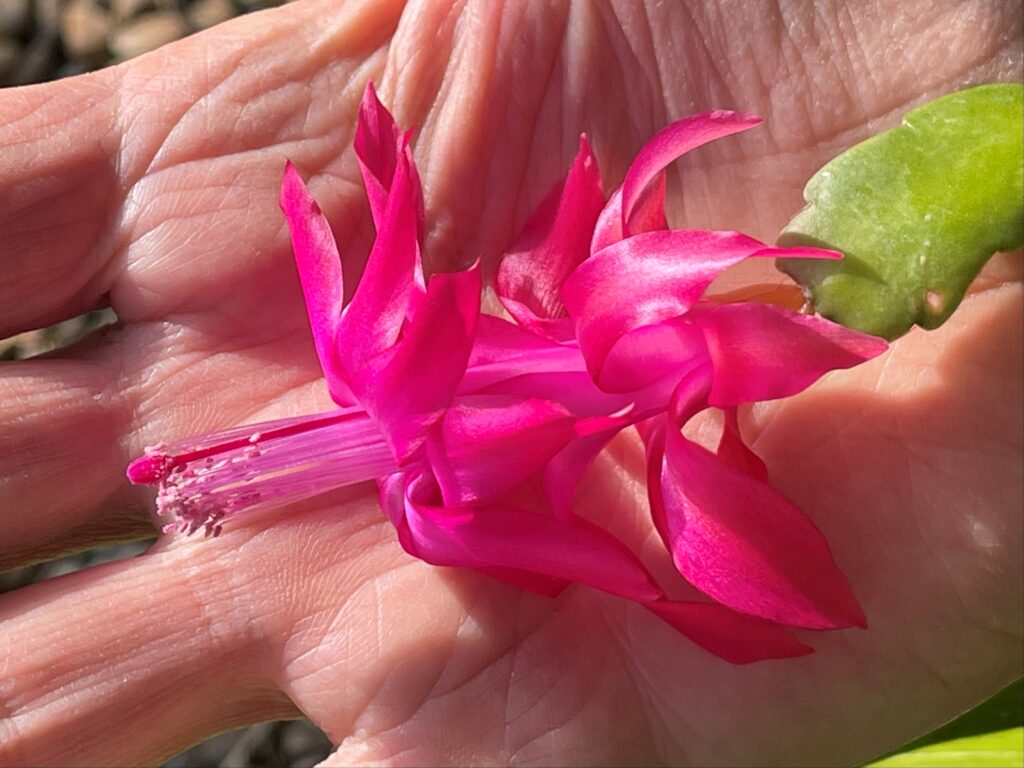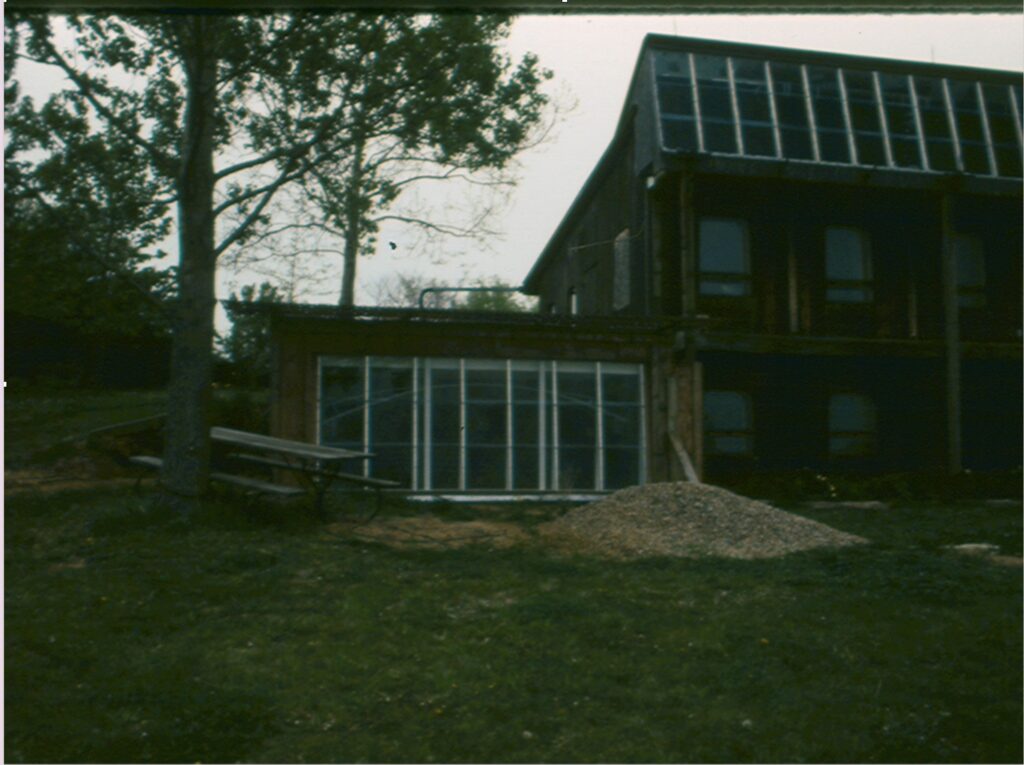Our Wall of Christmas Cactus
When I was a boy, a barbershop in our neighborhood had a large north-facing display window which was shaded in summer by a silver maple tree. The only display was an immense Christmas cactus which overflowed a washtub, and every winter it became a glorious mound of brilliant red flowers for a month or two. The shop was near my newspaper route, and on my Christmas postal route, so I often stopped by to admire the plant.
My dad took me to our local public library, which in that era functioned sorta like the internet of today, except that we would stop for an ice cream cone on the way home. The books there indicated that there was a group of closely related cactus species from the coastal mountains of southeastern Brazil. They were all epiphytic, growing on large tree branches or exposed rocks with just a little soil for anchoring and a few nutrients.
Unlike most other members of the cactus family, they grew in cool, moist, shady locations and were not armored with thorns or spines. They had all been grown in greenhouses for a couple of centuries in Europe, especially England, and bloomed in winter, thus the name Christmas cactus was widely and rather indiscriminately used for the several species.
My more intimate experience with Christmas cactus came after we had lived in Iowa for a while. I had already built a well-insulated, partially earth sheltered shady greenhouse. It is larger than it looks in this photo because it extends down below outdoor ground level.
This greenhouse stays relatively cool all year round. In summer, the insulation and shade plus extensive earth contact, keep it around 80 degrees. This prevents the whitefly problem which plagues hot greenhouses, and I have never used insecticides. In winter, the insulated garage door overhead drops down behind the single-pane glass at night and a little fan from a dead Xerox machine brings wood heat in from the house if needed, maintaining it around 50 degrees. This is not a greenhouse for growing tomatoes or oranges, but has its own suite of plant species which favor cool and shady and low maintenance.
One day a quarter century ago, a neighbor asked me to help move some heavy furniture. In a dark room was a large dead Christmas cactus in a large pot. It had been his mother’s and had been stowed back in this corner and forgotten for a half year. While carrying it out for disposal, the brittle brown top broke apart, and once outdoors in brighter light, I noticed that the base at soil level was still sorta green. I recalled from my library visit that this epiphyte went through an annual dry season in its native habitat. So maybe it wasn’t dead but just very dormant.
So I took it home to my greenhouse and watered it and ever so slowly the roots rejuvenated and over a couple of years it turned into a bushy green plant again that bloomed in winter. It was not a demanding plant and I found it very easy to propagate from cuttings. Little epiphytic roots are even already present at many stem joints.
I then layered the back wall of our greenhouse with a stack of old fashioned clay farm drainage tiles, so it sorta looked like a giant wine rack. These were available because the ag industry had switched over to plastic tile, and odds and ends of unused clay tiles were piled back into fence corners and no longer wanted. When my cuttings had their roots well anchored in their little plug of dirt, I transplanted them into the tile wall and put a handful of small pebbles over each dirt cone, so when I watered it didn’t wash away the soil.
And so here is our wall of Christmas cactus in bloom last January. On a sunny winter day, this is the place to be, no need to retreat to Florida.
Tags: christmas cactus, diy planting, greenhouse, hummingbirds, Iowa, iowa city, Lon Drake, propagate, succulent






